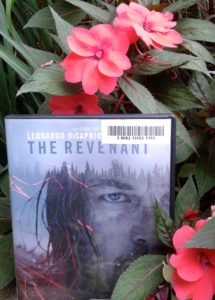Print is dead.
At least, that’s what the Big Five publishing houses fear. One company is fighting the potential loss of sales and its possible demise in a public battle that affects readers and writers alike.
Before 2007 or so, the only way an author’s story was read was through a print copy in brick-and-mortar bookstores. The only way to get into a bookstore was through a major publisher. Knowing their control, these large publishers chose the stories and genres people read, the prices at which books were sold and what the authors got paid.
Now that snippy digital upstarts like me are snooting our way in and circumventing the system they so strategically designed, publishers are no longer needed. With digital formats, there is no gatekeeping; I can write and publish any book at any length in any genre I choose and at any price.
Without hardcover or paperback books, the publishers’ choking grip on the market disappears with the turn of a page. The Big Five lose all public prestige, respect, expertise, control and sales. Especially sales.
Welcome to the battle between Hachette and Amazon.
Hachette wants to charge high e-book prices to discourage electronic sales and boost paper sales. Amazon wants to keep prices of e-books favorable to consumers. This dispute has been going on for years. To understand the impact of today’s feud, let’s go back in time for a brief history…. (Shout out thanks to J.A. Konrath’s timeline for the format inspiration that I use.)
NOVEMBER 2007
Amazon releases the company’s Kindle e-reader.
NOVEMBER 2009
Barnes & Noble introduces the company’s Nook e-reader.
Retailers continue buying books and e-books using “wholesale pricing,” an agreement in which publishing houses charge half the printed cover price to those retailers. The booksellers then compete with each other by discounting books or offering sales. At this time, hardback book prices range from $15-30.
Amazon is a large company with a large share of the e-book market. They rarely sell at full price, offering book titles below the printed cost, even as far down as $9.99 for bestselling novels. The Big Five publishers make a lot of money through the sales of higher priced hardcover books, and this consumer-friendly price point might encourage more digital sales than paper. These companies didn’t want that to be the standard that consumers would expect to pay.
JANUARY 2010
Apple prepares to release its iPad, but if they offer books in their iBookstore at a price to compete with Amazon, the company will lose money. A publishing executive blames Amazon’s “wretched $9.99 price point.” Apple and the Big Five publishers work out an agreement that benefits everyone. The publishers switch book distribution away from wholesale pricing to the new and improved “agency pricing” model. In this agreement, publishers control the price of the e-book rather than the retailer. Sales percentages are split favorably, as well: 30% to Apple and 70% to publishers. In this scenario, consumers who choose to buy e-books instead of physical copies are, in a sense, be punished for affecting paper sales.
The only caveat is that all publishing houses have to sell this way to all of Apple’s competing retailers, including Amazon. Amazon pushes back, but with everyone else agreeing to this method of distribution, the company has to accept these terms. Book prices on Amazon’s site rise to $12.99 and $14.99. The term “colluded” is later used when referring to this agency pricing arrangement.
APRIL 2010
Apple releases the iPad.
JULY 2010
Amazon reports that digital e-books outsell hardcover books for the first time in history. The agency pricing continues for two years before the U.S. government steps in.
APRIL 2012
The U.S. Justice Department (DOJ) accuses Apple and the publishers of conspiring to raise e-book prices and filed a civil antitrust lawsuit. By developing and utilizing agency model, “the publishers prevented retail price competition resulting in consumers paying millions of dollars more for their e-books” especially for the most popular titles by big-name, best-selling authors.
Three of the Big Five publishing houses, which include Hachette, settle immediately. Retailers resume discounting and offering sales. The publishers pay financial restitutions to consumers and are “prohibited for two years from entering into new agreements that constrain retailers’ ability to offer discounts or other promotions to consumers….” The DoJ settled with two other publishers and Apple by 2013, yet Apple appeals the decision.
Now fast forward to the present year. Apple’s appeal is ongoing as of this post.
JANUARY-FEBRUARY 2014
The 2-year contracts are ending, so new ones need to be negotiated or extended. Amazon sends a contract to Hachette. Because they do not receive a response from Hachette, Amazon removes the site’s pre-order buttons and stops discounting Hachette titles.
MARCH 2014
Hachette’s contract to sell books with Amazon expires, but Amazon extends it into April while both sides negotiate. Because the outcome is uncertain and shipping dates cannot be guaranteed, Amazon reduces the print inventory of Hachette titles.
APRIL 2014
There is now no longer any contract for Amazon to sell Hachette titles on Amazon. Hachette finally makes counter offer, Amazon rejects it.
MAY-JUNE 2014
Hachette authors notice slower sales, so Amazon makes several proposals that they and Hachette offer financial provisions for the authors during negotiations. Hachette declines all of them.
JULY-AUGUST 18, 2014
Here’s when media runs wild with statements, press releases and proposals, oh my!
Hachette compiles its press releases and statements regarding Amazon here.
Propaganda or perspective? Article from Random House editorial assistant Alison Herman with intriguing links at the end.
Big Five authors want print to thrive. Who can blame them? Without physical books, bestselling authors like Stephen King, John Grisham and James Patterson lose their dedicated personal assistants and vacation beach houses. They each become “just another little writer” in a writer’s ocean.
There is a letter from Douglas Preston, a Council Member of the Author’s Guild, signed by authors supporting Hachette. As of August 9, the letter had approximately 900 signatures, published as a full 2-page $110,000 advertisement in the New York Times as “A Letter to Our Readers.”
There is a petition by Change.org urging readers and writers to support the company who supports readers and authors. As of August 9, the petition reached 8000 electronic signatures. (8466 as of my post)
On August 9, The Amazon Books Team releases a letter discussing their point of view from within the negotiation. There are some good links at the end. It’s worth a read through.
The email reply from Hachette CEO Michael Pietsch in response to Amazon’s August 9 letter request for consumers to contact executives about the negotiations.
Amazon releases a statement justifying the $9.99 price point: “For every copy an e-book would sell at $14.99, it would sell 1.74 copies if priced at $9.99. So, for example, if customers would buy 100,000 copies of a particular e-book at $14.99, then customers would buy 174,000 copies of that same e-book at $9.99. Total revenue at $14.99 would be $1,499,000. Total revenue at $9.99 is $1,738,000.”
And here we are, readers and writers, reeling in the wake of potential propaganda from both sides. Marketers in any company can spin numbers any way they want to make the numbers show in their favor. I don’t necessarily believe in Amazon’s exact number or those calculations empirically, but the rationale behind it is solid. If I had $15, would I spend it on one book? Am I more inclined to buy a $9.99 book and a coffee and muffin to enjoy while reading the book? If a purchase like that gives me that pleasure, then I’m encouraged to buy another similarly priced book for a similar experience.
“Why should e-books cost as much as, or more than, a printed copy?” my husband asked me. “There’s no shipping or printing.” He’s a chemist and not in the publishing industry. If this is so elementary to someone outside the industry, how is it lost on someone in the publishing business?
I’m not necessarily pro-Amazon, but I am pro-information. Some people do not have the drive or desire to do it all, so turning their work over to a Big Five publisher is the best option for them. But how is Hachette assisting and nurturing its authors when it let their contract with Amazon expire, and thus all its authors’ contracts as well?
If Amazon wins this battle, they will dominate the market…for now. At some point, all Amazon authors could be stuck with a business model that no longer offers today’s benefits, and then Amazon becomes the Big One publisher. If that happens, authors are not stuck.
Unlike print, where the only way to publish was through a publisher, there are now numerous electronic options. No doubt any number of smaller publishers and retailers will develop online stores. Any author can sell directly from their website. These were options never available before.
Who needs who more, Amazon or Hachette?
Who, or what, do authors need?
Print may be dying, but books and stories never will.
 A screenplay bridges the gap between novel and movie and converts the story into images and dramatized action. In the narrative-heavy novel, The Revenant by Michael Punke, readers know Hugh Glass’s thoughts and motivations as if inside his head, third person point of view close. Although this works well in the book “The Revenant – A Good Idea for a Novel,” on the big screen, viewers would see Hugh Glass and be clueless. What is he thinking?
A screenplay bridges the gap between novel and movie and converts the story into images and dramatized action. In the narrative-heavy novel, The Revenant by Michael Punke, readers know Hugh Glass’s thoughts and motivations as if inside his head, third person point of view close. Although this works well in the book “The Revenant – A Good Idea for a Novel,” on the big screen, viewers would see Hugh Glass and be clueless. What is he thinking?